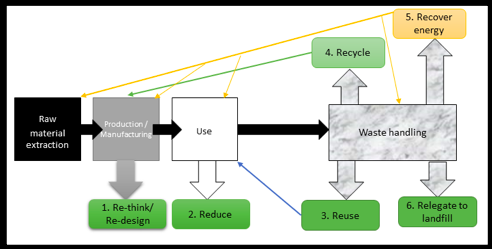Stories – true ones at that – are powerful in getting messages across. They are more effective than theoretical verbose! So here is one. A senior Swedish couple (in their early 70s) – acquaintances of mine in Karlstad (Sweden), visited Thailand recently. I paid them a courtesy call on their return and they narrated their ‘travelogue’ to me (or at least a part of it). Björn (name changed) observed that the Indian Ocean, or rather the Andaman Sea to the west of Thailand and the Gulf of Thailand to its south and east harboured tonnes and tonnes of plastic waste – microplastics, meso-plastics and macro-plastics; in a range of sizes, shapes and colours! He also noted that the Thais were open to using plastic bags at will! Thanks, one may say, to the abundance of raw feedstock which comes from neighbouring Indonesia, Malaysia, Brunei and now also Myanmar.
Yet he joked, knowing where I came from, that most of those plastics floating on the Andaman Sea or the Gulf of Thailand (or already settled on the seabed), originated in Mumbai – dumped there and carried by ocean currents around Kanyakumari and into the Bay of Bengal, and therefrom some of them also further to the Gulf of Thailand. Possible? Well, not incontrovertible to some extent, but at the same not easily proven. We now know that petroleum-based plastics are persistent pollutants which cannot be bio-degraded, and they stay on in the environment they are jettisoned into, and find their way back to us. What goes around comes around. This applies not just to your karma, but plastics as well, my friends.
That brings us to the gist of this piece. Plastics when they made a foray into the global manufacturing sector, were heralded as fantastic lightweight substitutes for wood and metal. As the family of plastics – polyvinylchloride, polyethylene, polypropylene, polyethylene terephthalate etc. – started expanding, plastics became amenable to a plethora of applications. We tend to look upon the post-1950s as the Aluminium Age, but it could very well be labelled as the Age of Plastics or Polymers. The former term indicates a physical property of the material, while the latter refers to the structure of the same.
Quo vadis, plastics?
Well, producing plastics causes greenhouse gas (GHG) emissions, both upstream in the petroleum extraction and refining process, and in the plastics production process per se. Then, they enter the use phase. Try doing this, dear readers: 1) Track the inflows and outflows of plastics of all types into your household for a month. 2) Then, try to get an estimate of the stocks of plastics which have piled up in your homes, as materials of construction of products you use or do not use for that matter. 3) Assume average lifetimes of the products made of plastics (wholly or partly) in your household and think of what happens to them when they exit your door – in typical Indian urban and rural settings.
Where I used to work (in Norway), most plastics were dutifully and systematically collected (separated at source by users, responsibly) and recycled. Where I work now (Sweden), most plastics are collected and sent to combined heat and power plants, where they are incinerated to recover heat energy. A part of the heat energy is used to produce electricity in steam turbines. The material mass of plastics which is essentially carbon, hydrogen and oxygen (and chlorine in the case of PVC for instance), is transmuted to gases which are released to the atmosphere. Now, both these alternatives do not function so well in India. The latter does not suit us, as we do not have a demand for indoor heating in our country – not as much as households in the higher latitudes do. But wait a minute. Did we miss an opportunity here? Could we have conceived symbiotic projects, whereby plastic wastes could have been collected and sent to an incineration plant which could recover energy therefrom and supply it as heat to nearby industrial units and replace natural gas and oil as sources of heat in the process? We are sadly, still decades away from getting there – systems which are already well-entrenched in the western world. How much has been recycled thus far in our country, I do not know. How much lies in garbage dumps, I can clearly see.
The journey from the airport to home, when I visit India, is spent simply observing from the cab window, the status of the solid waste management system in Aamchi Mumbai. Swachh? Well, why are we deluding ourselves, folks? How much is thrown away on the stretches of beaches from Gujarat to West Bengal, I have seen, off and on. How much is floating on the seas (Arabian Sea, Bay of Bengal and the Indian Ocean), we get to hear from time to time, but ignore, as that is so far away. Right? It hits us, when we find a whale with polythene bags in its gut washed away on the beach (I am not sure if any such thing happened in India, but the Norwegians witnessed this of late). We ban cow slaughter, and ‘maybe’ it is okay (I am a vegetarian Brahmin, but wish to be non-opinionated on this issue), but then is it okay to let cows suffocate to death, choking on plastic bags? If we must not slaughter them, we must strive to provide them with a good life…to the best of our abilities?
Phase-out – better late than never?
Well, in Maharashtra, the phase-out has begun. This will happen in a stepwise fashion, I guess…till compostable plastics take over totally from the petroleum-based originals. Technology will get us there, but it needs time, and it begs of us to adjust and make some sacrifices en route. I recall having gone out to a Bikaneri sweet shop in New Mumbai and purchasing a box of ‘pedas’ last week. The old man behind the counter got out a plastic bag for me to carry the cardboard box in. I said that I did not need it and he was visibly happy. He said that it would be so nice if everyone visiting the shop had always said that!
As consumers, we have an 80% responsibility while the policymakers we elect have a 20% responsibility. We are responsible for electing them and also responsible for bringing about much-needed change or as Mahatma Gandhi said, being the change we wish to see around us. Top-down and bottom-up must work in tandem like spin bowling from one end and pace from the other, to cull a cricketing analogy. We need to fully and thoroughly agree that unwittingly/knowingly, directly/indirectly, we have contributed to a host of environmental problems – be it climate change, biodiversity losses or resource depletion. I recollect what a former classmate of mine told me recently about a conversation he had with his teenage son. The son told him, ‘ You guys were a luckier generation. We are the ones who now have to face up to the challenges of resource scarcity and environmental degradation. You’ll will have lived your lives by then.’ Well, readers…how many of you would like it if your children spoke out this truth to you?
Cogito, ergo sum
Well, think please. Whenever your rigorous daily schedule gives you the opportunity. Understand what you can do as an individual. Get together with like-minded people and change things if you can. Set the ball rolling on new trends and let these ‘memes’ spread out in society. Exert pressure on policymakers all the way up to the Prime Minister and bring about a much-needed change for the well-being of city, state, country and humankind, now and more importantly for future generations. What my friend’s son told him is the truth and we must not leave this world a worse-off place when we shed our mortal remains someday in this century ahead. I leave you with Figure 1, which depicts the hierarchy of alternatives/options for making the life-cycle of any product environment-friendlier.


 [/column]
[/column]